The Galapagos Islands animals are legendary, seen nowhere else on the planet. They’re fearless. They’re endemic. They’re the foundation of Darwin’s theory. But did you know that some are exclusive to select islands? If you’re wondering what unique animals live in the Galapagos Islands, read on. We chose a popular sample of Galapagos Islands animals and will explain where, when and how you can find each species while on your Galapagos trip, plus other fun facts and videos.
Want quicker navigation? Find your favorite Galapagos Islands animal from the gallery below, click on its name in orange and skip straight to that section.
Galapagos Islands Animals

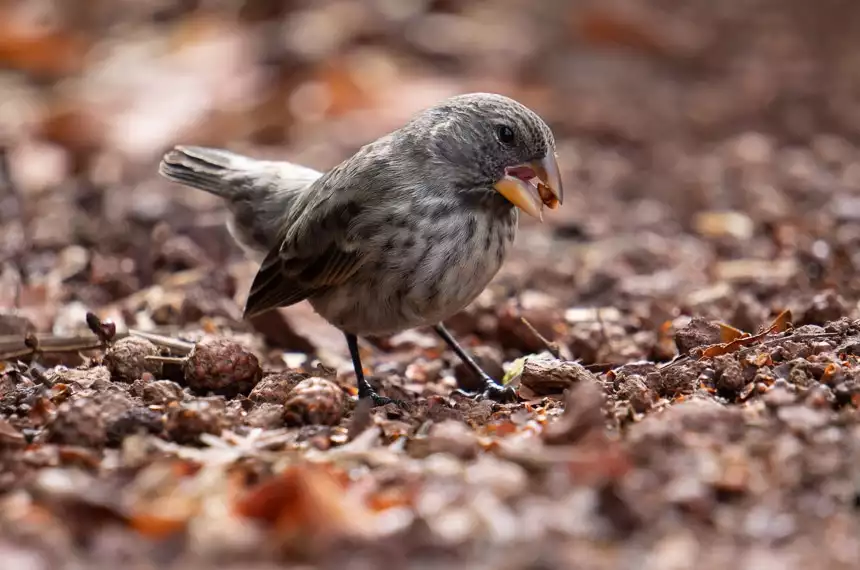
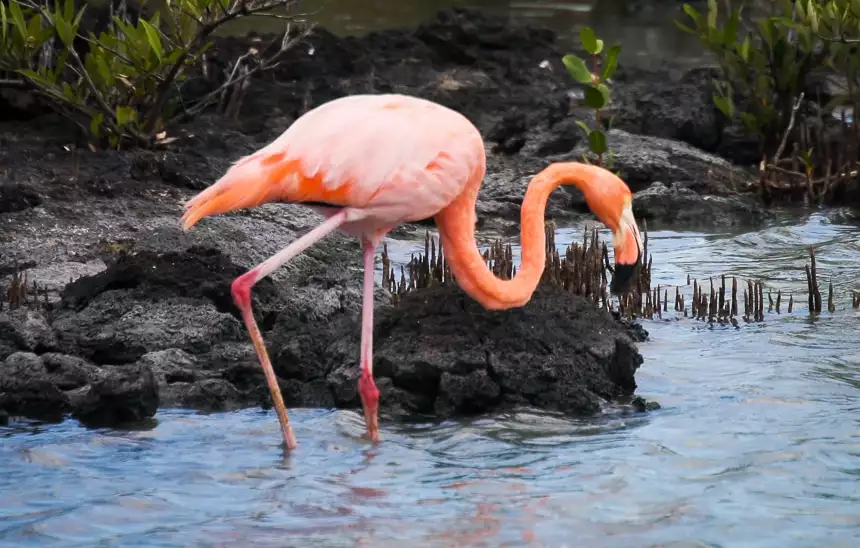
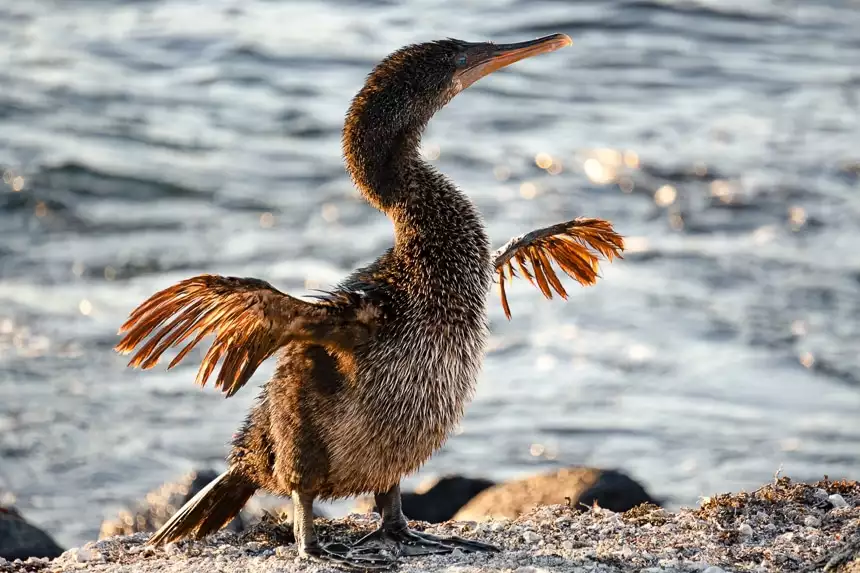


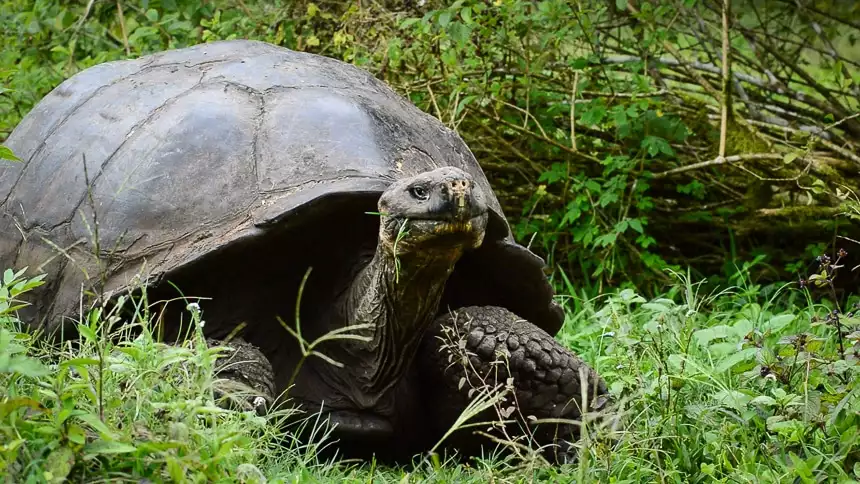
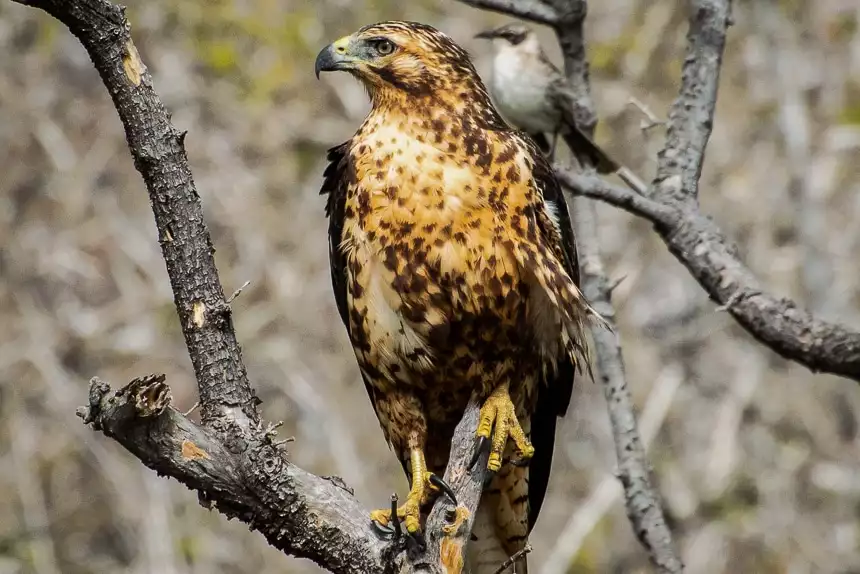


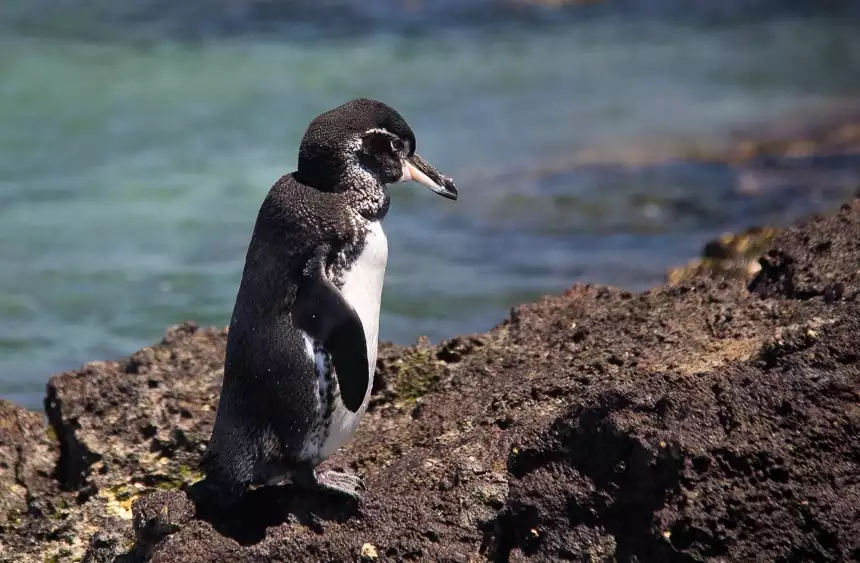
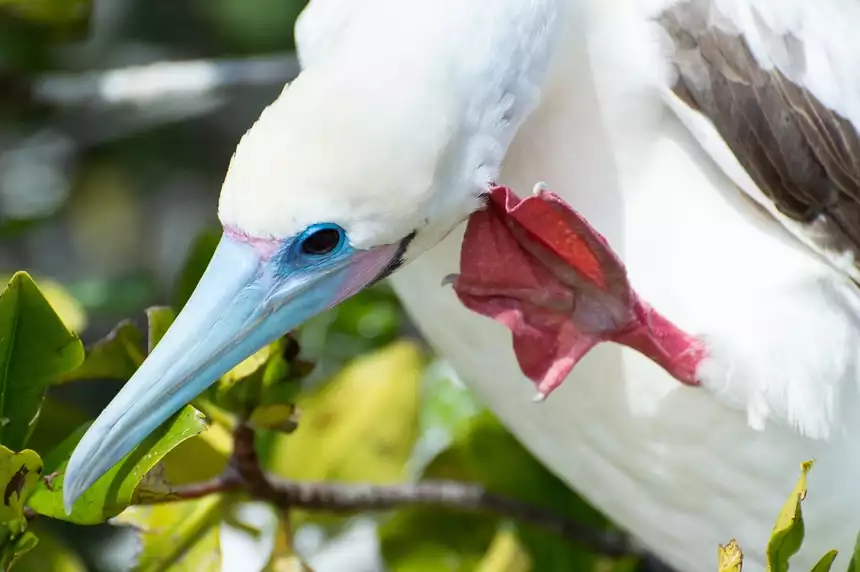
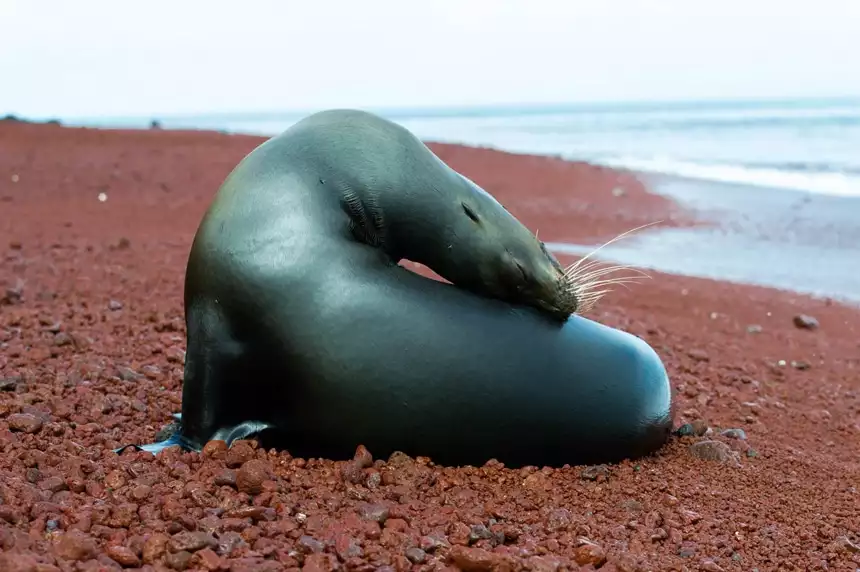
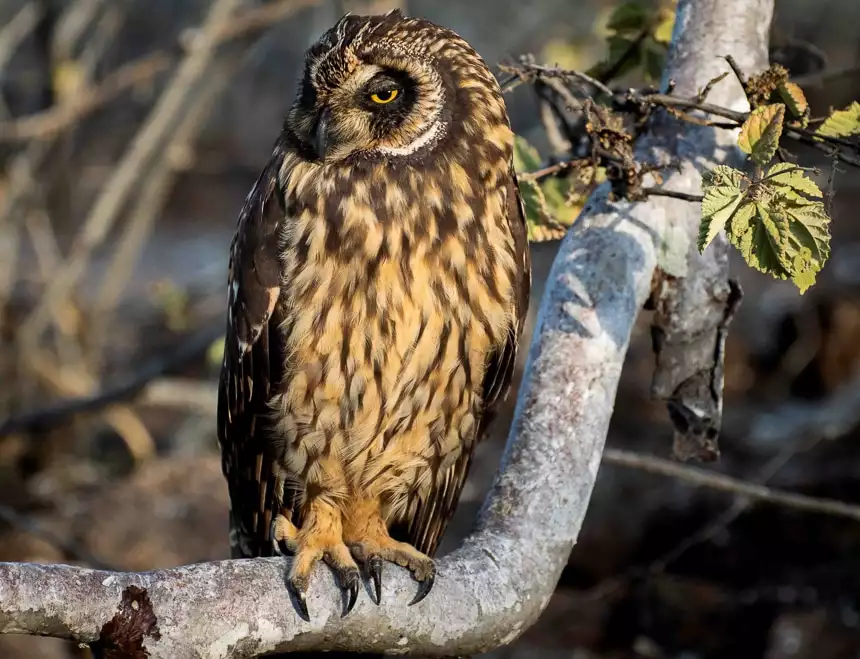

If you want info on Galapagos animals not included in our current list, please scroll to the bottom and leave us a comment!

Blue-Footed Booby
WHERE: Blue-footed boobies can be spotted almost anywhere in the islands and most cruises will stop where colonies are present. However, the largest breeding colonies are on North Seymour and Española Islands. These birds can also be found at any given time at sea.
WHEN: Blue-footed boobies can be seen all year round. Their mating season usually runs from June to August, which can be the best time to see their famous mating dance.
HOW: Thanks to those unmistakable bright blue feet, they aren’t hard to spot. Look for their nests on the bare ground, ringed by feces called guano. You can also find these Galapagos Islands birds plunging to the water surface from as high as 80 feet in the air for fish.
FUN FACTS: Their blue feet are due to carotenoid pigments from their diet of sardines. Individual boobies who are effective hunters have stronger-hued blue feet, which is a symbol of good health; a very important trait when attracting a mate. When diving for fish, blue-footed boobies have developed air sacs in the skull that serve as built-in shock absorbers to counteract the force when they hit the water from tall heights. Check out the dive bombing boobies in the video below.
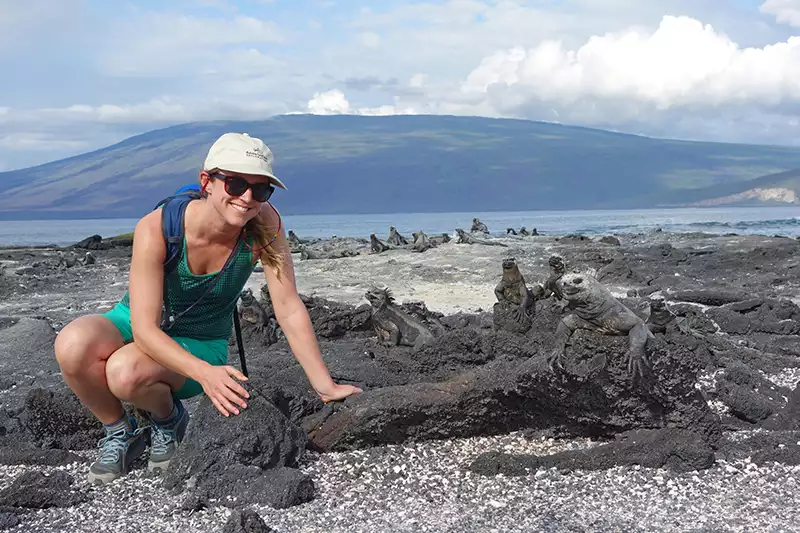
Need to See a Species?
Get advice from our experts who’ve been.

Darwin’s Finches
WHERE: There are 13 species of Darwin’s finches found in the Galapagos Islands. Different finches can be seen on different islands. See the table below to learn more about the location of Darwin’s Finches.
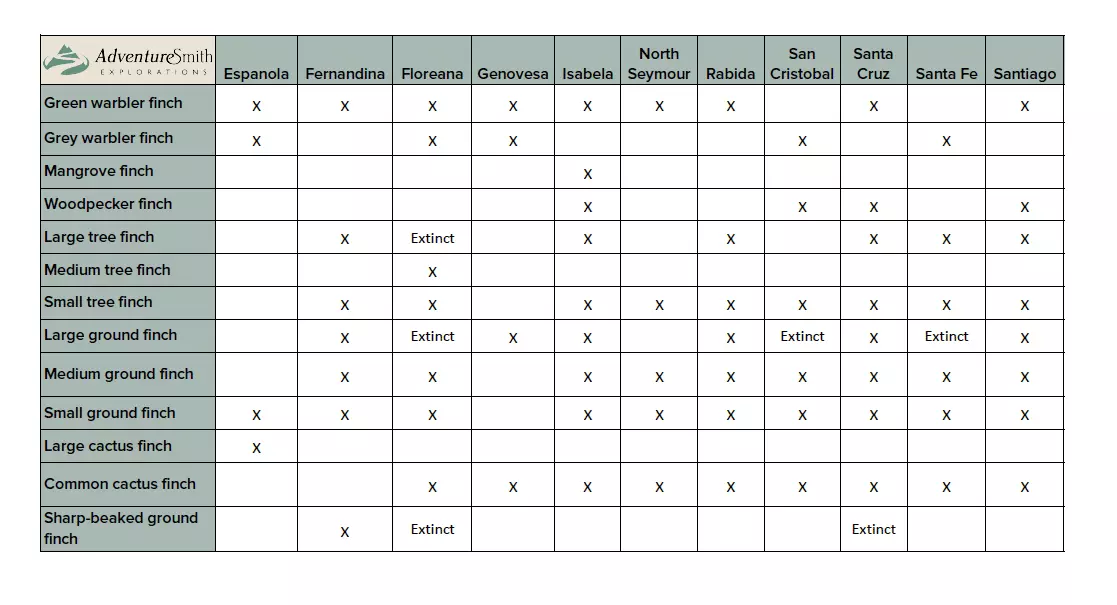
WHEN: Year-round
HOW: Sightings are very common, but you might not identify them right away as they don’t stand out like other birds in the Galapagos. Look for small, plain-looking birds colored dull black, brown or olive.
FUN FACTS: Technically these birds are in the tanager family not the finch family. And while they may not be visually interesting, they are incredibly fascinating, especially in relation to Charles Darwin’s theory of evolution. Darwin’s finches are under critical threat from introduced predators and diseases, habitat destruction and the invasive parasitic fly. Projects are underway to protect these Galapagos Islands birds.

American Flamingo
WHERE: With a little luck, spot them on Santa Cruz, Floreana, Santiago, Rabida, Isabela and San Cristobal Islands.
WHEN: Can be observed year-round but due to their small population (just a few hundred) they are harder to find. See courtship dancing and hatchlings during nesting season from March to July.
HOW: Mostly found in brackish lagoons close to beaches. Lagoons offer shallow water, where flamingoes can easily wade for food and nest.
FUN FACTS: Young flamingos are born gray and white. They become pink from two years old through adulthood, with a richer color indicating a healthier and heartier diet. These birds live to be 18-24 years old. As the world’s smallest flamingo population, they are endangered.
Back to Gallery

Flightless Cormorant
WHERE: Western coast of Isabela Island and eastern coast of Fernandina Island.
WHEN: Year-round. Nesting season is May to October.
HOW: The most distinguishing feature are their short, stunted wings and turquoise eyes. Flightless Cormorants nest on flat lava rocks close to shore with easy access to the sea.
FUN FACTS: These Galapagos Islands animals are a great example of species evolution. Flightless cormorants originally flew to the Galapagos Islands from the mainland. But eventually they had no predators on land and would hunt for their food in the ocean. The result was an unusual bird who adapted to become a highly skilled swimmer and diver but lost its ability to fly (hence the tiny wings).
Back to Gallery
View All
Galapagos Trips
See our full list of trips to the Galapagos Islands

Frigatebirds
WHERE: Frigatebirds can be seen throughout the Archipelago. Main breeding colonies are found on North Seymour, Floreana, San Cristobal and Genovesa.
WHEN: Year-round. The breeding and nesting seasons vary.
HOW: The male is all black with a large red throat pouch which is inflated during the breeding season. The female has a white breast and shoulder, as well as a blue eye-ring. On land look for low-hanging nests in mangroves and deciduous trees. But don’t forget to look to the sky. Many visitors will find frigatebirds following the ship as it moves between landing spots.
FUN FACTS: This bird is well known for its ability to steal food. It is not waterproof, so it had to adapt to feeding itself in ways that didn’t involve water. Frigatebirds became excellent at chasing other birds, catching their leftovers and pushing birds to vomit in order to feed themselves. From this thievery comes their nickname, “Pirate bird.”
Back to Gallery

Galapagos Fur Seal
WHERE: They are located on almost all of the islands but most easily spotted on Western Isabela, Santiago and Genovesa islands.
WHEN: Fur seals can be seen year-round. October is the best time to see pups.
HOW: The Galapagos fur seal is a very shy creature. Unlike sea lions you will rarely see fur seals at sea. During the day they hide from the sun, resting in the shade along rocky coastlines, and they hunt for food in the ocean at night.
FUN FACTS: The fur seal and sea lion can be difficult Galapagos animals to tell apart—here’s what to look for: Fur seals have thicker and furrier coats, larger eyes and more protruding ears. Also, fur seals tend to be smaller in size with shorter heads.
Back to Gallery

Galapagos Giant Tortoise
WHERE: Most if not all cruise itineraries will include a visit to see the most famous Galapagos Islands animal. In the wild, Galapagos giant tortoise are found on Isabela, Santa Cruz, Santiago, Rabida, Bartolome, San Cristobal and Espanola Islands.
WHEN: Year-round. They are most active midday during the cool season and early morning or late afternoon in the hot season.
HOW: Spotting Galapagos giant tortoise in the wild is a rare experience. Almost anyone who visits will see giant tortoises at a farm or reserve in the lush green highlands. Here they are free to roam where they please but are monitored. You may also see them at a breeding center or a trip to the Charles Darwin Research Station in Puerto Ayora.
FUN FACTS: Galapagos giant tortoise often live over 100 years and can weigh up to 550 pounds! The shell shape of this endangered species varies between islands. Multiple Galapagos giant tortoise species have gone extinct and others are threatened today. This is why breeding and research centers are so important to help re-populate areas that have been devastated by human consumption and feral animals.
Back to Gallery
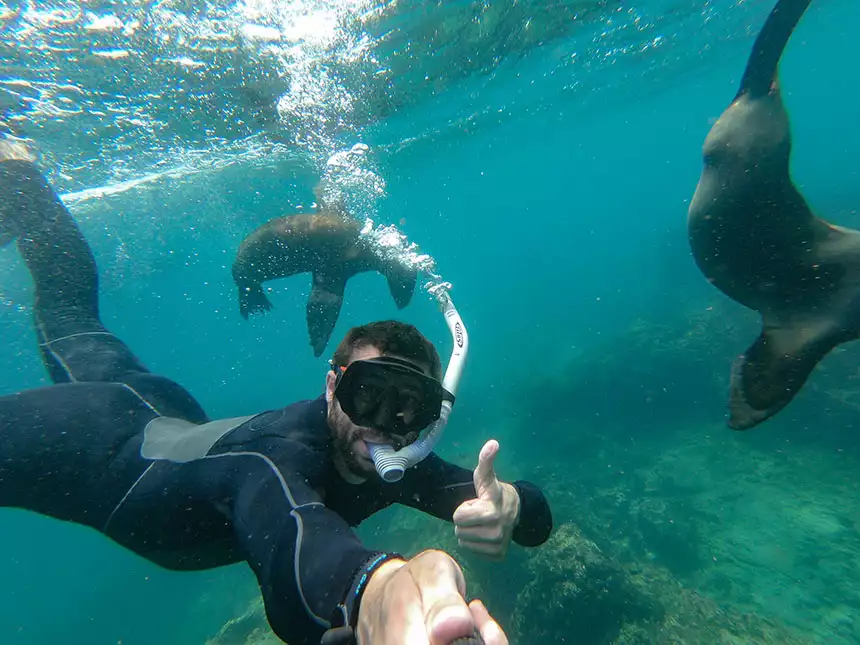
Make It Happen
Stay in the loop on Galapagos & save when you go

Galapagos Hawk
WHERE: Found on most islands, but are uncommon to witness. Galapagos hawks have gone extinct on Baltra, Floreana, San Cristobal and North Seymour.
WHEN: Galapagos hawks nest year-round.
HOW: Easily recognizable as it is the only hawk species on the islands!
FUN FACTS: There are just 150 breeding Galapagos hawk pairs left on the planet today, so an encounter with one is truly special. They are the Galapagos Islands’ apex predator and also the only diurnal raptor on the islands, meaning they hunt and feed during the day.
Back to Gallery

Land Iguana
WHERE: The Galapagos land iguana makes its home on the islands of Floreana, Isabela, Baltra, Santa Cruz, North Seymour and South Plaza.
WHEN: Year-round
HOW: Galapagos land iguanas prefer dry and arid areas. Look for a yellow dragon-like creature with a long tail, clawed feet and spiny crest. Some can be more than 3 feet long. Their heavy tail drags behind them making the perfect trail for tracking this Galapagos Islands animal in dirt or sand.
FUN FACTS: Land iguanas look to birds like finches and mockingbirds to help clean their scaly exterior, creating a symbiotic partnership. Land iguanas formerly existed on most of the other islands in the archipelago, but hunting and competition by introduced animals that preyed on iguana eggs, caused a severe population decline. Today there are active conservation projects underway to protect Galapagos land iguanas.
Back to Gallery

Marine Iguana
WHERE: Marine iguanas can be seen in coastal regions on the islands of Isabela, Fernandina, Española, Floreana and Santa Cruz.
WHEN: Year-round, with their mating season occurring between January and March.
HOW: Though they feed in the water (and you’d be lucky to snorkel around one), these Galapagos animals are most often observed on sandy shorelines or black lava rocks, basking in the sun. The young are black while the adults range in color depending on the island, becoming very vibrant during breeding season. Española’s green and red “Christmas iguanas” are the most colorful marine iguanas of all.
FUN FACTS: Marine iguanas are endemic to the Galapagos Islands and the only lizards on Earth that spend time in the ocean. Marine iguanas “sneeze out” excess salt that their bodies collect while underwater, through a nasal gland. When marine iguanas go hungry, they will shrink and then regrow as food becomes plentiful again.

Galapagos Penguin
WHERE: Mainly found on Isabela and Fernandina islands but much smaller colonies can also be seen on Floreana, Santiago and Bartolome.
WHEN: Galapagos penguins live and breed on the islands year-round. They are the only penguin species with no set breeding season, they simply choose to mate when food is abundant.
HOW: They are the only penguin species found in Galapagos, so they’re easy to identify! Visitors can often swim with them around Pinnacle Rock on Bartolome. Galapagos Penguins need shade, especially for nesting. Look near lava rocks that have easy access to the sea with caves that provide shelter.
FUN FACTS: The Galapagos penguin is the rarest and most endangered penguin species in the world.
Back to Gallery

Red-Footed Booby
WHERE: Main sightings occur on Genovesa Island, where the largest colony on the planet lives. Less common sightings occur on San Cristobal (Punta Pitt) and on a small islet off Floreana Island.
WHEN: Red-footed boobies inhabit the Galapagos islands year-round. The easiest time to spot them is usually during nesting season, from February to September.
HOW: These Galapagos Islands animals are easily recognizable for their distinctive red feet and a pale blue beak. Unlike other boobies, these ones have adapted to being on trees and will nest in trees or shrubs.
FUN FACTS: In the Galapagos, the red-footed booby bird has two feature colors of brown or white. They have similar behavior to their blue-footed relatives with deep sea diving and courtship rituals.
Back to Gallery

Galapagos Sea Lion
WHERE: This Galapagos Islands animal is fairly abundant and can be found on all of the islands of the Galapagos archipelago.
WHEN: Year-round. To see cute pups try visiting between July and November.
HOW: Look for them swimming in the shallows or sun bathing on beaches. They also lay around on public benches and docks. For a special highlight, there are many snorkel sites where you can share the water with playful and curious sea lions.
FUN FACTS: They may look like the California sea lion but they are different and endemic to the Galapagos Islands. They can dive to depths of 500 feet, staying submerged for up to 10 minutes.

Galapagos Short-Eared Owl
WHERE: Widespread throughout the archipelago and have been known to fly between islands. Most frequently seen on Genovesa Island.
WHEN: Year-round. On islands shared with hawks the owl will hunt solely at night, whereas on islands without hawks they will hunt at day or night.
HOW: One of the more elusive Galapagos animals to spot, this shy creature with large yellow eyes and short tufted ears has effective camouflage in its mix of dark and light brown feathers. The short-eared owl is found in open areas of grassland or lava rock.
FUN FACTS: Although they generally feed on rats, lava lizards and small birds, they are also capable of hunting birds much larger than themselves, such as boobies and storm petrels, by striking at the back of the neck and thereby taking the bird by surprise.
Back to Gallery

Galapagos Albatross
WHERE: These Galapagos Islands birds breed exclusively on the island of Española.
WHEN: The best way to catch a glimpse of them is to travel during the breeding and chick rearing season between April and December.
HOW: If you are at the right island at the right time, spotting the Galapagos albatross is easy because they are the largest bird in the Galapagos Islands. Outside of breeding season (January to March) the Galapagos albatross is harder to spot as they migrate and spend their time at sea.
FUN FACTS: One of their most interesting behaviors is their elaborate courtship dance which includes bill circling, bill clacking, head nodding and a cow-like moo. This dance is elusive, so you would be lucky and honored to witness it.
Back to Gallery
View All
Galapagos Trips
See our full list of trips to the Galapagos Islands
Tips For Spotting Galapagos Animals
Stay With Your Guide
Make use of the well-trained eyes and ears of your Galapagos National Park guide. Park guides undergo an extensive training regiment and many of them have been leading groups through the islands for years if not decades. Your guide will help not only spot Galapagos Islands animals but also interpret what’s unfolding in front of you. The best guides work with first-rate ships and land programs, which we at AdventureSmith Explorations source from experience.
Spend More Time in the Archipelago
Another important consideration is TIME, even more so than route. Most of the iconic Galapagos animals presented here can be found on a Galapagos tour in any season. Learn about seasonal nuances in our month-by-month guide to the best time to visit Galapagos. The longer you can devote to exploring the archipelago, the more opportunity you’ll have to spot these amazing creatures.
Keep in mind that just because an itinerary visits a place inhabited by flamingos, for example, it doesn’t guarantee that you will see them. Longer options of 8 days or more often provide repeated chances to not only see what you’re after but also snap a great photo to bring home.
A small ship cruise optimizes your Galapagos Islands wildlife moments, as the ship efficiently moves among islands and visitor sites while you relax, dine, take in lectures and sleep. Galapagos land packages require daytime spent traveling to other islands, resulting in less time to seek out the wild species that draws adventurers to the Galapagos, but land tours can have other wildlife-spotting benefits that our experts can advise you on.
Start crafting your own adventure with our Galapagos cruises and Galapagos land tours. Learn how to get to Galapagos, find Galapagos cruise deals and contact our experts to get matched with the best trip for your timeline, budget and Galapagos animal interests.
MORE GALAPAGOS RESOURCES:
Galapagos Trips
Galapagos Luxury Travel
Galapagos with Kids
Galapagos Diving
Galapagos Cruises
Galapagos Charters
How to Choose the Best Galapagos Cruise
Galapagos Island Hopping or Cruise?
Land Based Galapagos Tours
Best Time to Visit Galapagos
How to Get to Galapagos
Galapagos Trip Reviews
Galapagos Travel Guide
Galapagos Cruise Deals
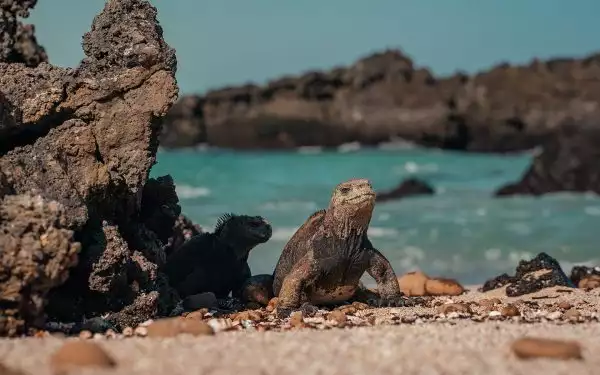
Comments will be moderated and will appear after they have been approved.
Thanks for this information and appealing orientation to the wildlife viewing opportunities made available on a small ship cruise of the Galapagos. It provides a nice condensed list of native creatures in their natural environment that a seeker could strive to site and photograph. I found it interesting to consider the advantages of access for the wildlife enthusiast travelling by small ships…less time on the road means more time in the environment where these amazing creatures are found.
Hi Eileen,
Thank you for your comment. We’re glad to hear that you found our list helpful. Traveling among the Galapagos Islands by small ship certainly does provide increased opportunities to view these iconic animals.